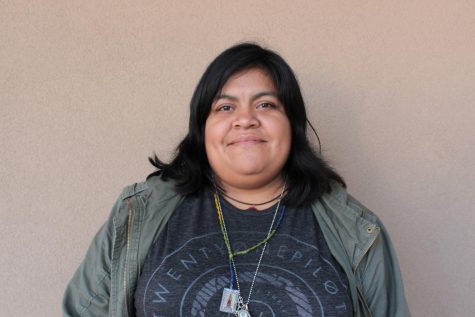Lending a Helping Hand
Food Pantry seeks to help students
College students worry about passing their classes, getting to work on time, finding a good parking spot at peak campus hours. Some students struggle because they don’t have access to a good breakfast, some can’t afford eating.
Indeed, more than a third of college students don’t always have enough to eat or don’t have a stable place to live at, according to a study published by Temple University and the Wisconsin’s in HOPE lab.
To fight this ongoing problem, Glendale Community College found a small and simple solution to help its students receive some food supplies and other necessary items.
In the summer of 2016, a task force of seven members spent time researching ways to distribute the food to the students. They considered Garfield’s campus, as well as GCC campus. While researching, Ellen Oppenberg, professor and learning specialist, came across an organization called College and University Food Bank Alliance (CUFBA). From there GCC’s food pantry became members of CUFBA once the pantry opened.
Oppenberg discovered that CUFBA had 550 pantries all around the country. That is when she realized that there is a great need not only at Glendale, but nationally, she said in an interview.
“I started looking at Cal State Northridge, UCLA’s program, and other campuses with a food pantry, and from there we just kinda built our own brick by brick,” Oppenberg said.
September 2016, the food pantry was inaugurated at GCC and ready to help its students.
Some of their produce comes from the Los Angeles Food Bank that the school purchases at a discounted price. The Trader Joe’s in Montrose, Calif., donates fresh produce weekly. Also the Kiwanis Club in Glendale donates money, so they can use it as food vouchers for the students. These vouchers are distributed by Oppenberg to any student she is referred to and they have $50 dollars which can only be used at GCC cafeterias. Associated Students of GCC has also given contributions of $75 dollars gift card to buy grocery products from Ralph’s. Oppenberg also meets with the students to see in what other ways they can help, for example either housing needs, healthcare or clothing.
The food pantry spends about $1,800 a month to make sure the pantry is fully stocked. Besides the food contributions from different organizations, staff and faculty allow part of their paycheck to go to the food pantry every month.
There is no criteria for students to receive help. They only ask the students to be actively enrolled and then the student fills out a small paper with just their name and school ID and types of foods they are looking for.
“We hope the people in line truly need this, but we don’t question them,” said Oppenberg.
Oppenberg has gotten feedback from so many students, but the one that stood out the most was a letter she received from Sara Brock, who graduated from GCC in 2017. Brock wrote about how grateful she was for the food pantry.
“I didn’t expect I’d ever rely on such generosity, but the food pantry has really helped me very much,” said Brock in her letter. “Near the beginning, I was shy and slightly embarrassed that I got food from the food pantry […] and I’m not embarrassed because it’s not really in my control. I am going to school and I am working, but even with my job, most of my earnings goes to my own insurance, gas, and other bills. Until then, I’m going to continue to work hard both in school and at work, and thank God for the generosity of my college to supply me with food.”
The committee is trying to expand their services to help students not only with the food pantry, but with other problems when it comes to financial savings.
“The food pantry is only a Band-Aid to me, it’s not enough, I wish we can extended our services to the students,” said Oppenberg.
The food pantry is located in the San Rafael building in room 134 next to the Health Center. For more information, you can email Ellen Oppenberg at [email protected].
Carolina Diaz can be reached at [email protected]

Carolina Diaz has been attending Glendale Community College since 2015. One of her goals is to transfer to a 4-year university. Her passion is writing...
